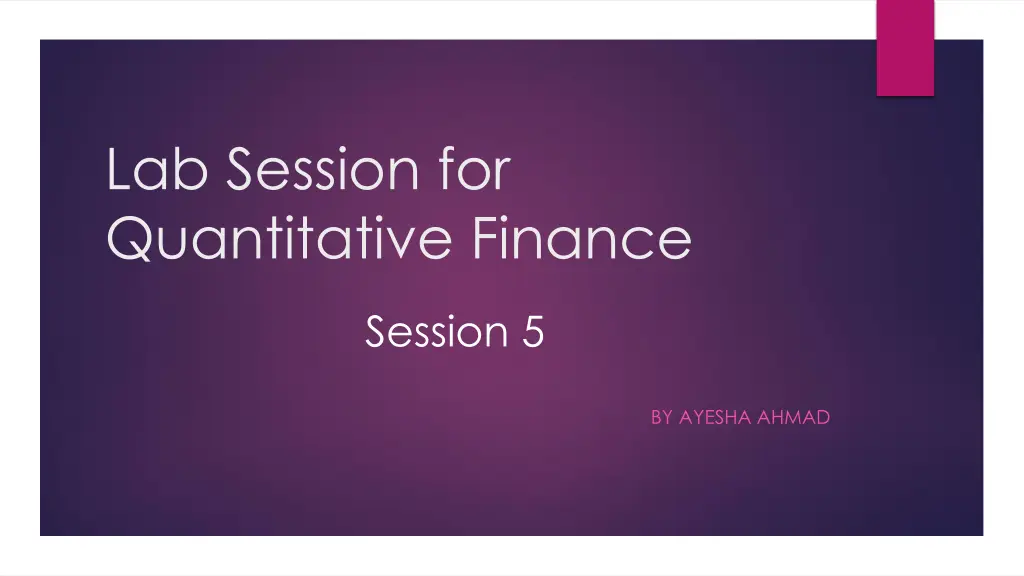
Understanding Arithmetic Brownian Motion in Quantitative Finance
Learn about Arithmetic Brownian Motion (ABM) in quantitative finance, where the process changes by a constant amount over time with random fluctuations. Explore the drift and diffusion terms and how Wiener processes are used in modeling ABM.
Download Presentation

Please find below an Image/Link to download the presentation.
The content on the website is provided AS IS for your information and personal use only. It may not be sold, licensed, or shared on other websites without obtaining consent from the author. If you encounter any issues during the download, it is possible that the publisher has removed the file from their server.
You are allowed to download the files provided on this website for personal or commercial use, subject to the condition that they are used lawfully. All files are the property of their respective owners.
The content on the website is provided AS IS for your information and personal use only. It may not be sold, licensed, or shared on other websites without obtaining consent from the author.
E N D
Presentation Transcript
Lab Session for Quantitative Finance Session 5 BY AYESHA AHMAD
What is Arithmetic Brownian Motion? What it says is that in an infinitesimal period of time, the process changes by a constant amount, which depends on the length of the period, and a random component. The first term can be interpreted as trend, whilst the second term is the random fluctuations around the trend. More formally, the first term is called the drift, whilst the second term is called the diffusion term. Beware: The physicist s definition of diffusion takes a different form as we shall see when we discuss the heat/diffusion equation
ABM Let ? be wiener processes and ?? be the increment ?? in normally distributed with mean zero and variance ?? ?W = (0, ?? ) ?? = ????????? ? Lets define an array X for ABM ?[? + 1] = ? [?] + ??? + ? ??
